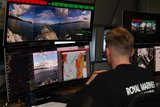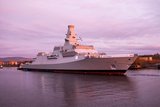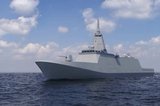US CBP receives first interceptor vessel
SAFE Boats International (SBI) has completed and delivered a new Coastal Interceptor Vessel (CIV) for US Customs and Border Protection (CBP) Air and Marine Operations (AMO), the company announced on 27 May.
The CIV has been formally named 'Alexandria'.
The CIV is a variant of the SAFE 41 Interceptor adapted to meet AMO requirements. The 41ft rugged vessel can perform high-speed interceptions in close proximity to other vessels and reach over 54kts in open ocean. It can be configured for various missions, including the pursuit of suspect vessels to board, search and arrest and seizing the suspect vessel and its contraband.
Dennis Morris, president and CEO, SBI, said: 'SAFE Boats is honoured to be delivering our milestone 2000th hull as the first CIV to CBP AMO whose vital mission is to defend our great country.
'This is the next phase in a longstanding relationship we have with CBP dating back to 2002, and we are optimistic that other international defence agencies will be interested in the vessel for similar mission requirements.'
More from Naval Warfare
-
![NATO tests use of “undetectable, jam-proof” laser communication in maritime scenarios]()
NATO tests use of “undetectable, jam-proof” laser communication in maritime scenarios
As part of its effort to better prepare its capabilities for operations in contested and congested scenarios, NATO evaluated a Lithuanian ship-to-ship terminal designed to not be susceptible to enemy interference.
-
![US Navy advances with the Harpoon Service Life Extension Programme]()
US Navy advances with the Harpoon Service Life Extension Programme
The US Navy plans to improve Harpoon’s anti-ship and land attack capabilities by equipping the missiles with sensors and technologies required for succeeding in future battlespace.
-
![Mitsubishi eyes future with Australia’s Mogami selection]()
Mitsubishi eyes future with Australia’s Mogami selection
With Australia’s selection of the Mogami-class for Project Sea 3000, Mitsubishi is investigating local production in the next decade as potential export opportunities emerge.
-
![Thales’ new Sonar 76Nano could equip UK Royal Navy on anti-submarine warfare missions]()
Thales’ new Sonar 76Nano could equip UK Royal Navy on anti-submarine warfare missions
The new sonar is designed to equip uncrewed underwater vessels, with the potential to be used by the Royal Navy for its Atlantic Bastion and Atlantic Net missions.
-
![Hanwha wins Australian government approval to increase its stake in Austal]()
Hanwha wins Australian government approval to increase its stake in Austal
The contract would mean the two shipbuilders can collaborate strategically and enhance shipbuilding capabilities in Western Australia.
























